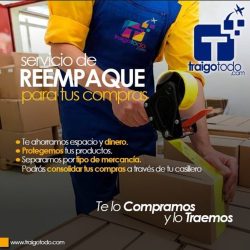One might say this about a work assignment, a home renovation, or about one’s relationship with another person. This website is using a security service to protect itself from online attacks. There are several actions that could trigger this block including submitting a certain word or phrase, a SQL command or malformed data. Sometimes this is used as an adjective and then should be hyphenated as a compound modifier; however, this construction is slightly awkward. Shortening it to in-progress carries the same meaning as is much easier for the reader.
These projects have much longer timelines and may take years to complete a single instance. Consider an example of the build-out of a custom yacht; there is only one time, a set of diverse materials, and a longer timeframe needed for complete than simpler products. For some users in accounting and manufacturing, there is a distinction between inventory and assets, but outside of those fields the difference is negligible. Often indicating very similar types of work, this may include work in progress, construction in progress, or construction work in progress. On the other hand, work in progress assets are usually treated as long-term assets. These undertakings may take years to complete, and the financial benefits of work in progress projects may not be fully recognized within the next year.
- Though not required, the goal is to eliminate any pending products to only report completed goods.
- In accounting, WIP is considered a current asset and is categorized as a type of inventory.
- A work-in-progress on a company’s balance sheet represents the labor, raw materials, and overhead costs of unfinished goods.
- For some users in accounting and manufacturing, there is a distinction between inventory and assets, but outside of those fields the difference is negligible.
- Allocations of overhead can be based on labor hours or machine hours, for example.
Work in process items usually transfer to inventory, then are used to determine cost of goods sold. Work in progress is usually reported as a capital asset and depreciated https://www.bookkeeping-reviews.com/bookkeeping-synonyms-bookkeeping-antonyms/ when completed. As such, the difference between WIP and finished goods is based on an inventory’s stage of completion relative to its total inventory.
In accounting, WIP is considered a current asset and is categorized as a type of inventory. Work-in-progress, as mentioned above, is sometimes used to refer to assets that require a considerable amount of time to complete, such as consulting or construction projects. This differentiation may not necessarily be the norm, so either term can be used to refer to unfinished products in most situations. This inventory is found on a manufacturing company’s balance sheet.
Work in process is usually used to report manufactured, standardized goods. These goods are also referred to as goods-in-process, and for some, work in process refers to products that move from raw materials to finished product in a short period. An example of a work in process may include manufactured goods that take less an a full accounting cycle to normally complete. In supply-chain management, work-in-progress (WIP) refers to goods that are partially completed. This covers everything from the overhead costs to the raw materials that come together to form the end product at a given stage in the production cycle.
The difference between WIP and finished goods is based on the inventory’s stage of relative completion, which, in this instance, means saleability. Finished goods refer to the final stage of inventory, in which the product has reached a level of completion where the subsequent stage is the sale to a customer. This account of inventory, like the work in progress, may include direct labor, materials, and manufacturing overheads.
We and our partners process data to provide:
WIP and finished goods refer to the intermediary and final stages of an inventory life cycle, respectively. In a bind, a company will find it much easier to liquidate work in process items. Though these goods are incomplete and still require some work to become finalized goods, the timespan in doing so is much shorter than work in progress goods. In addition, the market may be more willing to buy work in process goods outright if they are for standardized goods. For example, suppose XYZ Roofing Company provides its residential clients’ bids for roof repair or replacement.
A company often uses internal allocation methods to determine the estimated financial value of work in progress. For example, the company must not only assess the financial value of incomplete goods but estimate what percent complete its products are. A piece of inventory becomes labeled as work-in-progress when raw material combines with human labor. When the product is finalized, it switches from WIP to being categorized as a finished product. Finally, when the product is sold, it moves from a form of inventor to cost of goods sold (COGS) on the balance sheet. Work in progress is sometimes used to refer to assets that require a considerable amount of time to complete.
Work-in-progress sometimes is used interchangeably with work-in-process, but work-in-progress typically refers to more time-consuming projects, such as construction. Work-in-process typically refers to goods that are manufactured relatively quickly. In production and supply-chain management, the term work-in-progress (WIP) describes partially finished goods awaiting completion. WIP refers to the raw materials, labor, and overhead costs incurred for products that are at various stages of the production process. WIP is a component of the inventory asset account on the balance sheet.
Each roof is a different size and will require specific roofing equipment and a varying number of labor hours. Each bid lists the labor, material, and overhead costs for the work. A piece of inventory is classified as a WIP whenever it has been mixed with human labor but has not reached final goods status. Only some, but not all, necessary labor has been performed with it. WIP, along with other inventory accounts, can be determined by various accounting methods across different companies. On the other hand, work in progress is more representative of massive, one-time undertakings.
Asset Liquidity
Accountants use several methods to determine the number of partially completed units in WIP. In most cases, accountants consider the percentage of total raw material, labor, and overhead costs that have been incurred to determine the number of partially completed units in WIP. The cost of raw materials is the first cost incurred in this process because materials are required before any labor costs can be incurred. The WIP figure reflects only the value of those products in some intermediate production stages.
For some, work-in-process refers to products that move from raw materials to finished products in a short period. In accounting, inventory that is work-in-progress is calculated in a number of different ways. Typically, to calculate the amount of partially completed products in WIP, they are calculated as the percentage of the total overhead, labor, and material costs incurred by the company.
Works-in-Progress vs. Finished Goods
Developers and manufacturers take raw materials and convert them into finished goods. Depending on the scope of the undertaking, they may be better suited to report work in process or work in progress. Work in process usually refers to more standardized extension of time to file your tax return manufacturing practices of smaller products, while work in progress usually refers to larger, longer builds of more technical assets. In both cases, a company develops an asset but the reporting and accounting treatment may vary.
These costs are subsequently transferred to the finished goods account and eventually to the cost of sales. Work in process is an asset account used to report inventory items not yet completed. A company has started taking raw materials and converting them to a finished product to sell. However, that final product is not yet done and is not yet ready for sale.
He is a CFA charterholder as well as holding FINRA Series 7, 55 & 63 licenses. He currently researches and teaches economic sociology and the social studies of finance at the Hebrew University in Jerusalem. A work in progress is a project that is not yet finished or polished.










